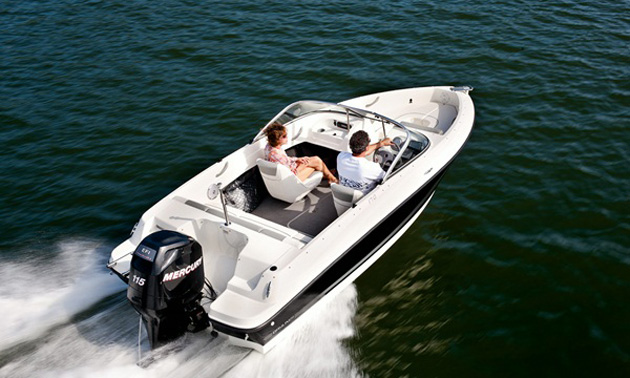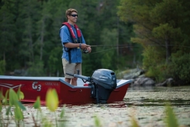Starting an Outboard Motor After a Long Storage
Posted by Brooke Wallace on 8th May 2023
Before You Start Your Outboard Motor
1. Every de-winterization process starts with the same basic idea: inspection. Cracks can develop in the motor and motor components when water is left in the system during the freezing temperatures of winter.
Even Florida and the Southwest gets below freezing during the winter. If you find any damage, don’t move on to the next steps. Stop and decide what needs to be done to repair the damage.
MPW Pro Tip: Before you start any outboard after it has been in storage, first pull the plugs, spray WD-40 in the heads, leave the plugs out and manually turn the motor by the flywheel or prop. If everything turns smoothly, then you can go ahead and move on to the next steps.

2. Change the Oil and Oil Filter
If there is no obvious damage to the motor and the oil and oil filter weren’t changed in the fall, go ahead and change them now. If you did, then fresh oil and a new oil filter from the fall should still be okay in spring.
MPW Pro Tip: Clean oil is gold or amber and dirty oil is black. Only run your boat with clean oil.
3. Attach a Garden Hose to the Motor
Use a garden hose with good pressure and secure a water muff on the end of the hose. It needs to be tightened just right. If you do it too tight, it will be really hard to disconnect, but not tight enough and it will leak and interfere with the water pressure.
4. Clear Water Lint Screens of Debris
The water lint screens are where the impeller sucks in water to cool the motor while it’s running. If any debris is left on the screens, there will be a problem with getting enough water through the screen to cool the motor.
5. Attach Water Muffs
It’s important to position water muffs over the lint screens so they’re covering the entire screen. This will give the impeller enough water to pull into the motor.
6. Inspect the Propeller and Empty the Strainer
Inspect the propeller to make sure it is fastened tightly and rotating. If it’s loose and the motor is started, it can cause the propeller to come off and hurt someone. Next, empty the strainer then check all rubber parts and the impeller for damage.

7. Prime the Fuel Line
It’s necessary to get the air out of the fuel system before starting the motor. Depending on what type of outboard the boat has, there are 2 ways to do this: If the motor is equipped with a primer bulb, make sure the fuel line is connected to the motor then give it a few squeezes until it feels firm. This indicates that the line is charged and ready to be started safely. If the motor does not have a primer bulb, just turn the key to the ‘run’ position and wait. It will beep then the fuel pump will start running. After a few seconds, the pump will clear the air out of the fuel line automatically, and it can safely be started.
8. Turn on the Water
Once the lint screens are cleared, the water muffs are attached, the fuel line is primed, and the garden hose is securely attached, it’s time to get the water going by turning on the faucet. Pro Tip: Never run your motor dry because it will destroy the rubber impeller. When starting a boat on land, make sure there is water in the drive.
9. Start the Motor
Put the shift cable in the neutral position, push into ‘choke’ and start the motor. Pro Tip: Have a friend to start the motor so more attention can be paid to the water line, which is crucial to the next step.
10. Immediately Check for the Water Line
Once the water has had a moment to be pulled into the motor, there should be a water line coming out of the motor. If there isn’t a water line, TURN OFF THE ENGINE IMMEDIATELY. Absence of a water line, which is a stream of water coming out of the motor, means that the impeller is not pulling water into the motor properly. Assuming everything was done properly in the previous steps, then this could indicate there is damage inside the motor. Stop and ask an expert for help. If there is a water line, then continue to run the motor for 5-10 minutes until the smoke dissipates and water is running clear Pro Tip: If fogging oil was used to winterize the motor, then it is normal to see a lot of smoke when starting the motor for the first time in spring.
11. Move Through the Gears then Cut the Engine After 5-10 minutes and the water is running clear, shift to ‘forward’ then ‘reverse’ to verify all positions are working. Pro Tip: Be sure the hose is out of the way of the prop! Cut the motor and turn off the water.

12. Check Spark Plugs, Kill Switch, and Bilge Pump
If the spark plugs weren’t changed in the fall, then let the motor cool for a few hours and change them. If they were changed before putting the boat into storage, then they should still be okay. Check the kill switch. Hit the kill switch and pull the lanyard in to make sure it actually cuts the motor. This important safety step should not be overlooked. Check the bilge pump. Turn on the switch and make sure the bilge pump not only runs, but pumps water out of the boat. Put the plug in the boat and use the garden hose and put water in the boat, then turn on the bilge pump. This does take a little extra effort but if it isn’t working, it’s better to know now than when the boat is sinking on the lake.
Final Thoughts
Following these tips from Marine Parts Warehouse to starting an outboard motor in the spring will save money and time when done properly.

